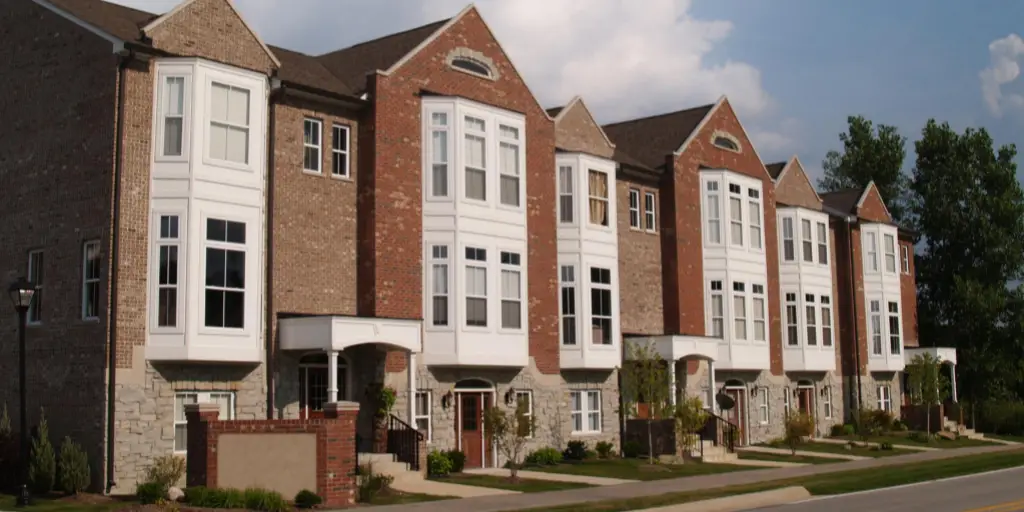Bay windows are a type of window that protrudes from a home’s exterior, creating a small alcove inside. Bay windows are typically composed of three individual windows that can be opened or fixed. Bay windows are a popular choice for homeowners because they provide several benefits. First, bay windows let in more natural light than traditional windows, making a room feel brighter and more open. Additionally, bay windows can create the illusion of additional space in a room.

Finally, bay windows can be used to showcase unique features or items in a home, such as plants or sculptures. When shopping for bay windows, homeowners should keep in mind the size of the alcove, the type of glass, and the style of the frame. By considering these factors, homeowners can find the perfect bay windows for their homes.
What this article is about?
- Bay windows create light-flooded rooms in the home and add significant value to the property.
- Casement or lattice units are usually used in bay windows.
- Windows of this type are often installed floor-to-ceiling or connected to a bench inside.
- Bay windows can be modern or have a classic rustic look.
- When buying and installing a set of new bay windows, you should expect costs of between $800 and $3.000.
They expand the room, let in a lot of light, and form a cozy seating area framework. Bay windows can easily enhance the look of your bedroom or living room. Discover the most common types of bay windows, their advantages and disadvantages, frame materials and glazing, and the costs.
What are bay windows?
As a closed and covered porch, a bay window not only increases the area of a room. Thanks to the corresponding windows, significantly more light penetrates the interior. Bay windows usually have two wings and are angled outwards.
Characteristic is their large surface, which in turn requires effective thermal insulation. Therefore, modern frames and multiple glazing that offer sufficient thermal insulation are essential for bay windows.
History of bay windows
Bay windows have been built since the Middle Ages, on the one hand, to show that the homeowners have money and can afford a unique house. On the other hand, the residents have a better view of what is happening outside.
This was especially important for the ladies, who used to not go out into the streets alone, but with the ample windows, had the opportunity to take part in life without leaving the house. The bay window was also used as a place to read.
Bay windows in old and new houses
Today, bay windows in old buildings can be found on the upper floors. Newer homes are instead built to the ground, forming a veranda or a conservatory. For example, one side of the bay window would often be wholly glazed or provided with a patio door. As a result, the residents get more light into the house.
If you have bought an old building with bay windows, you will have to deal with their replacement at some point. If the house is listed as a historical monument, the windows must be replaced true to the original. This can be expensive and troublesome because such windows do not correspond to today’s standard dimensions, and you must create custom-sized window panels. You are more unrestricted with a non-listed building. In this case, it is worth enlarging the relatively narrow windows and letting even more light into the apartment.
Pros and cons of bay windows
Due to their size, bay windows let a lot of light into the room and allow a good view of the surroundings. However, the glazing of a bay window is associated with some costs since the large window areas must be equipped with sufficient thermal insulation.
Advantages of bay windows
- A bay window can enlarge the interior space thanks to the exposed construction.
- The large area of bay windows intensifies the incidence of light.
- Bay windows allow for a more expansive view outside. Viewing angles from 45 to 270 degrees are also possible.
- Bay windows offer a traditionally elegant look for your home.
- If you don’t design your bay windows at floor level, they offer additional seating on the windowsill.
Disadvantages of bay windows
- Due to their size and unique design, bay windows are more expensive than other options.
- Bay windows increase the area of the house, which in turn allows more heat to escape. You need more expensive thermal glass to counteract heat loss through the window.
The different types of bay windows at a glance
Because of their exposed position, bay windows should fit as harmoniously as possible into the house facade. Casement, lattice, or fake lattice units are usually used in bay windows installations.
- Box (casement) windows
Casement windows have two casement frames that are combined in a box-like construction. The wings can be opened independently, whereby the opening direction depends on the respective design. Casement windows are among the most traditional window models and are mainly found in old buildings.

- Lattice windows
With mullioned windows, the glass pane is divided into several parts. The rungs serve as connecting pieces between the individual glass parts. In the past, glazing large areas in this way was possible. Today, rungs only serve as a design element. Because the production is complex and special attention must be paid to adequate window insulation, genuine lattice windows are more expensive than other types of bay windows.
- Fake lattice windows
Fake lattice windows use the look of their natural counterparts. The glazing is not subdivided here. Bars can either be installed in the spaces between the panes or placed on top of the glass pane. Since they are not used to stabilize the pane, the strips on such windows can be narrower. This, in turn, allows more light to enter the bay window. This technology is mainly used to construct large bay window sizes.
Frame and glazing of bay windows
Two factors play a decisive role in selecting the frame material for your bay window: the insulation and the appearance. If there are various wooden windows in your facade, you should buy bay windows made of wood. However, each material has its own advantages.
Wood, for example, achieves the best thermal insulation values, but it needs regular care. Plastic is the cheapest option but can discolor over time. Aluminum is the most robust but also expensive. Besides, you can go for a combination frame made of wood and aluminum or plastic and aluminum, especially if you need a small bay window size.
Here are the factors that play a crucial role in the right glazing:
- Thermal insulation
- Sound insulation
- Sun protection
- Bay window sizes
- Breakage resistance
- Burglar resistance
Types and functions of modern bay window glazing
You have to reckon with these costs for new bay windows. Since bay windows are often glazed all around and are usually installed floor-to-ceiling, higher costs can quickly arise. In terms of design, however, there is no difference between windows in conventional facades. Instead, the following factors play a role:
- Window size
- Window type
- Shape
- Frame material
- Opening mechanism
- Accessories
- Glazing
- Sprouts
- Manufacturer
How much a bay window can cost?
Bay window prices vary depending on the design. A single bay window made of plastic costs between $800 and $3.000, including installation. A fake lattice window may cost approximately $800 to $2.000, while an actual lattice window will cost approximately $1.500 to $3.000. A box window will cost approximately $1.000 to $2.500. These bay window prices are average values and serve as a guide.
Installation costs of bay windows
The installation costs make up about 30 percent of the above prices. The most significant variables are the hourly rate of the contractor and the time required for bay window installation. The former can vary depending on where you live but is usually around $40 to $60 per hour for the labor of a skilled window contractor.
You should allow two to five hours for the window installation, which certainly adds to the bay window replacement cost. If old windows have to be removed first, the working time is about an hour long, and the total bay window installation cost will be different as a result.
Our tip: We will help you to find the right specialist company to install your new bay window.
Bay windows: Repair or replace completely?
Bay windows themselves aren’t practical, but they have a few elements that fall into that category. The fittings, for example, are pretty delicate and can wear out over time – and the window is broken in no time. However, the question arises, Can it be repaired, or do you need a replacement bay window made from scratch?
The more serious the damage, the more sensible it is to replace the entire bay window. However, very old bay window models are challenging to repair today because there are no longer any spare parts for them.
- Glass breakage. A complete bay window replacement is always warranted. Theoretically, broken window glass can be replaced, but restoring the original condition is no longer possible, even with double glazing. At the same time, the scope of work would be so enormous that it would exceed the cost of a new bay window, including bay window installation costs. On some occasions, the exchange of the wing is often sufficient.

- Frame breakage. Several factors play a role. In the case of a frame breakage, however, the aim is usually to replace the window. A natural breakage means that a good part of the window frame is torn or broken deep down. Simple splintering, on the other hand, can be easily repaired.
- Leakage. Sometimes, moisture pools between the window panes, so the frame leaks. A simple repair is impossible here because the gas between the panes has escaped. Swapping the dark rubber between the frame and the lens is practically impossible.
The problem with replacing an old bay window is that the homeowner often has to compromise. The older the defective bay window, the lower its insulation value. For example, a single new bay window in the living room can now lead to thermal bridges since the rest of the outer wall is not improved, and the window is practically the best-insulated point on the facade.
Which variant makes sense? Repair or exchange?
The problem with windows is that they are an integral part of the building envelope. Everyone knows the stories of houses in which the windows were replaced without facade insulation – and in which mold suddenly sprouted.
With a single bay window section replacement, the problem is undoubtedly not that enormous, mainly since relatively modern bay windows are often used, and the facades have already been insulated.

